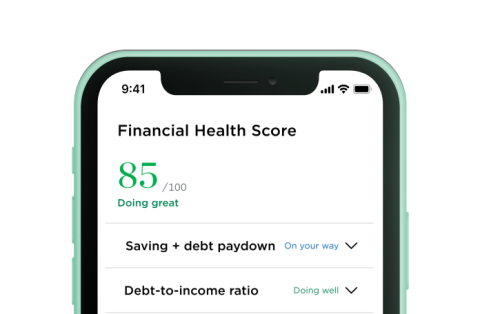The Pros and Cons of a Roth IRA

Many or all of the products featured here are from our partners who compensate us. This influences which products we write about and where and how the product appears on a page. However, this does not influence our evaluations. Our opinions are our own. Here is a list of our partners and here's how we make money.
The investing information provided on this page is for educational purposes only. NerdWallet, Inc. does not offer advisory or brokerage services, nor does it recommend or advise investors to buy or sell particular stocks, securities or other investments.
In the world of retirement accounts, Roth IRAs are a favorite. What’s not to love about totally tax-free growth on your retirement savings?
Still, Roth IRAs are not right for everyone.
Roth IRA pros and cons
Roth IRAs tend to be attractive because you can invest money you've already paid taxes on into the account and enjoy tax-free growth and withdrawals. That said, everything has a downside, and Roth IRAs have their fair share. Check out the pros and cons of this investment type below.
Roth IRA Pros | Roth IRA Cons |
|---|---|
You enjoy tax-free growth on your investments. Since you paid taxes upfront, you don't have to pay when you make qualified withdrawals at age 59 1/2. | There is no tax deduction, as you pay taxes before depositing the money into a Roth. |
During your lifetime, you're not subject to required minimum distributions, meaning you never have to make withdrawals | There is an income limit to contribute. Your modified adjusted gross income must be less than $161,000 for single tax filers in 2024 and under $240,000 for those married filing jointly in 2024. |
You can withdraw your contributions penalty-free at any time. | While you can withdraw contributions, you can't withdraw earnings tax-free before you're 59 1/2 and you've held the account for five years. |
You have diversification in retirement, so all of your accounts aren't tax-deferred. | The maximum contribution is relatively low. You'll still need other retirement vehicles to save enough for retirement. |
NerdWallet rating 4.9 /5 | NerdWallet rating 5.0 /5 | NerdWallet rating 4.1 /5 |
Fees $0 per online equity trade | Fees $0 per trade | Fees $0 per trade |
Account minimum $0 | Account minimum $0 | Account minimum $0 |
Promotion None no promotion available at this time | Promotion None no promotion available at this time | Promotion Get up to $700 when you open and fund a J.P. Morgan Self-Directed Investing account with qualifying new money. |
The pros of Roth IRAs
Here is a breakdown of the pros listed in the table above.
Your investment grows tax-free
Once you're 59 1/2 and have held your Roth IRA for at least five years, you won't have to pay taxes on withdrawals. That can give your savings a powerful boost, especially if you expect your tax rate to be higher in retirement.
There's no need for required minimum distributions
Traditional IRAs force you to pull out money beginning at age 73, thanks to required minimum distributions. Not so with a Roth. You can choose not to make withdrawals for as long as you're alive. This makes the Roth an effective financial tool to pass on to heirs.
You can withdraw your contributions
Unlike most retirement accounts, it’s easy to withdraw your Roth contributions — not your earnings, mind you — without penalty, at any time. That makes a Roth a nice backup emergency fund if you need it.
» Learn more about Roth IRA income and contribution limits
You get tax diversification in retirement
If you have a 401(k) or traditional IRA, you’ll pay taxes on that money when you start withdrawing it in retirement, and you’ll likely owe taxes on a portion of your Social Security income, too.
Having some money in a Roth provides the benefit of flexibility, meaning you can juggle your distributions from each account so you don’t push yourself into a higher tax bracket. That is, you collect your Social Security benefits, then take some money from your 401(k) or traditional IRA — just enough to bump up against the top edge of your income tax bracket.
If you need more income, you take a withdrawal from your Roth, which won’t count as taxable income.
» Ready to get started? See our list of best Roth IRA providers

Get a custom financial plan and unlimited access to a Certified Financial Planner™
NerdWallet Advisory LLC
The cons of Roth IRAs
Now, let’s take a closer look at the cons of this tax-advantaged account.
You pay taxes upfront
Roth IRAs provide tax-free withdrawals for future you. But if you're looking for savings now, contributing to a deductible traditional IRA might be an option. Your deductions may be limited, however, if you or your spouse has a retirement plan through work or your income is above a certain limit.
The maximum contribution is relatively low
The Roth IRA contribution limit is$7,000 in 2024 ($8,000 if age 50 or older). Traditional IRAs have the same contribution limits.
Compared with other retirement savings accounts, that's not a lot. You'll probably need to invest elsewhere, such as in a 401(k), to have enough for retirement. A 401(k) has an annual contribution limit of$23,000 in 2024 ($30,500 for those age 50 or older).
You have to set it up yourself
The beauty of a 401(k) is your employer encourages you to join — and will auto-enroll you starting in 2025. But you must open your own Roth IRA and remember to fund it each year. Setting up automatic contributions from your bank account can make the process easier.
There are income limits
Only people with income under specific amounts can contribute to a Roth IRA. We detail those income limits here. There’s no income limit on converting your traditional IRA to a Roth, however.
Are Roth IRAs safe?
Every investment carries risk, so it's about deciding whether a Roth IRA aligns with your financial situation and goals. Also note that a Roth IRA is simply a tax-advantaged account you use to invest; the investments are what carry risk. Before choosing your investments, consider doing research or seeking help from a finance professional.

Alternatives to Roth IRAs
If a Roth IRA isn't right for you, there are other investment accounts you can use, such as:
A Traditional IRA: This account is also tax-advantaged. You can put pre-tax dollars into your account and enjoy tax-deferred growth on your investments. When it's time to withdraw funds during retirement, you pay income tax on your withdrawals.
A 401(k): This is a retirement account opened by your employer to help you save for retirement. Contributions are also tax-deferred and employers often offer matches, meaning they will match what you contribute up to a certain amount. An added benefit is the contribution limit is higher than a Roth IRA, $23,000 (or $30,500 if you're 50 or older) in 2024.
A Roth 401(k): Similar to a Roth account, but held within a 401(k) account. The difference is you can contribute a larger amount than you can with a Roth IRA, and there is no income limit.
» Want to open a traditional IRA instead? See our list of the best IRA providers
On a similar note...







